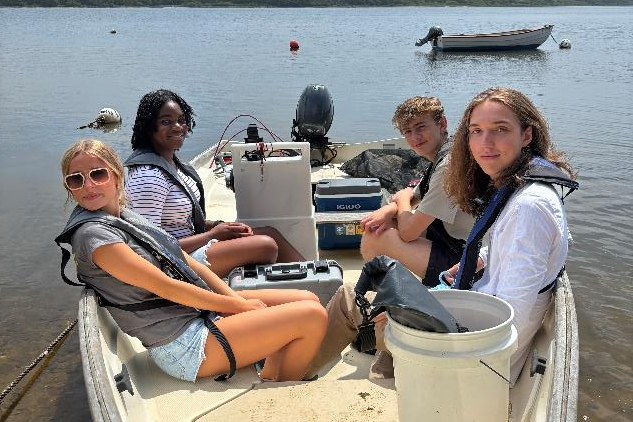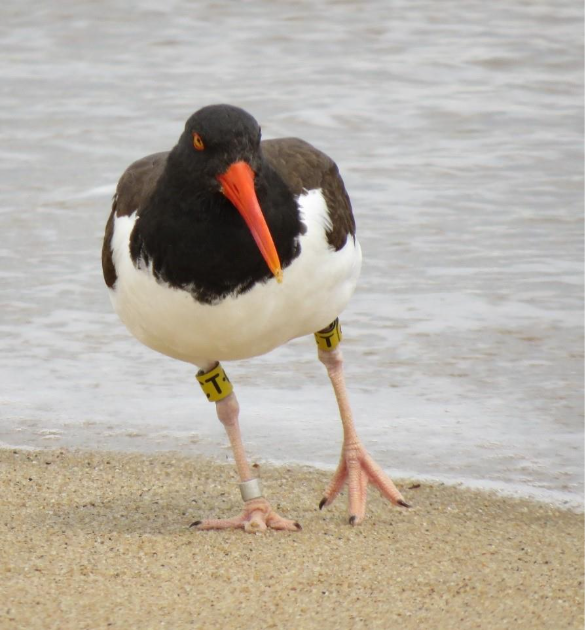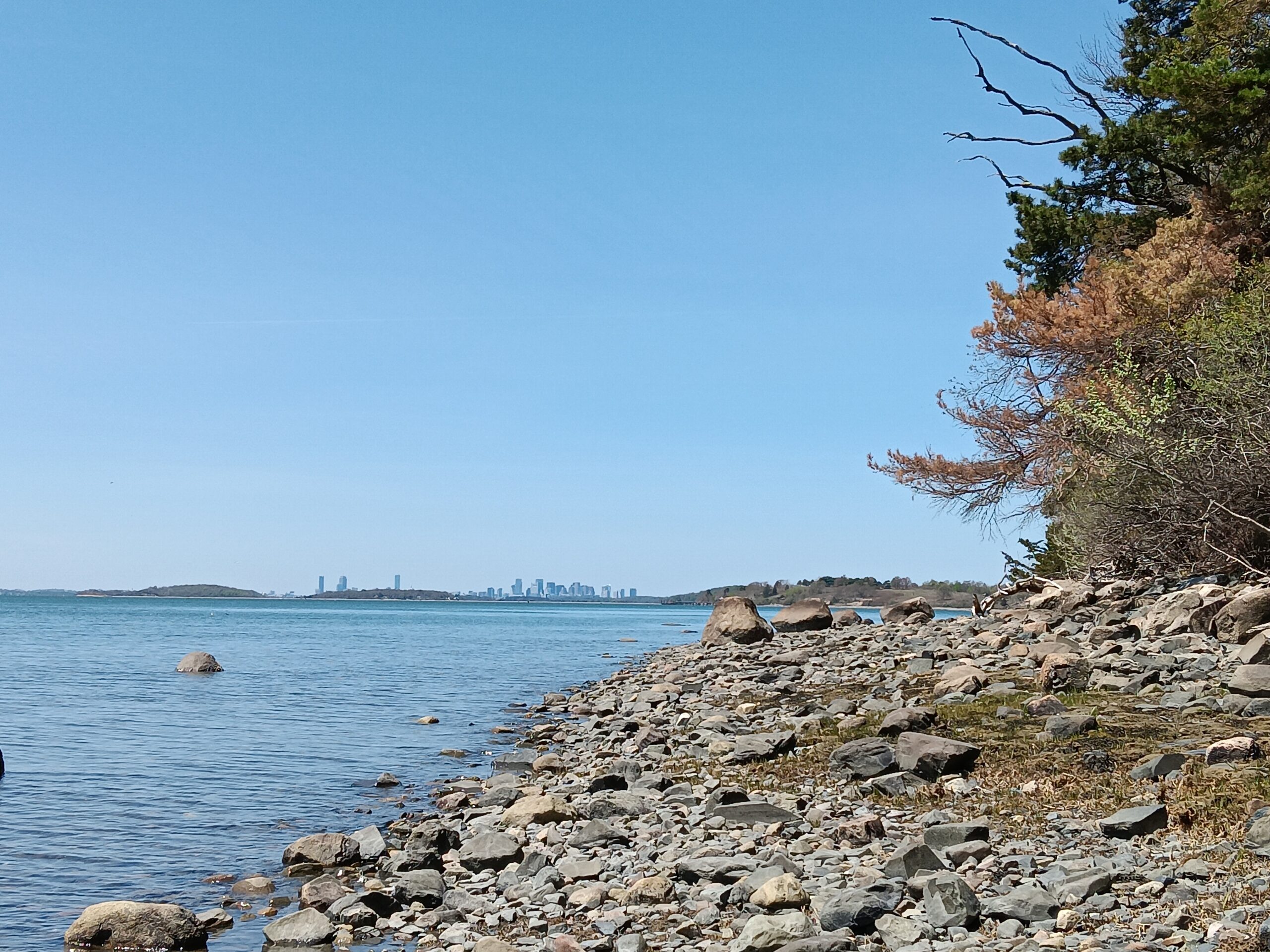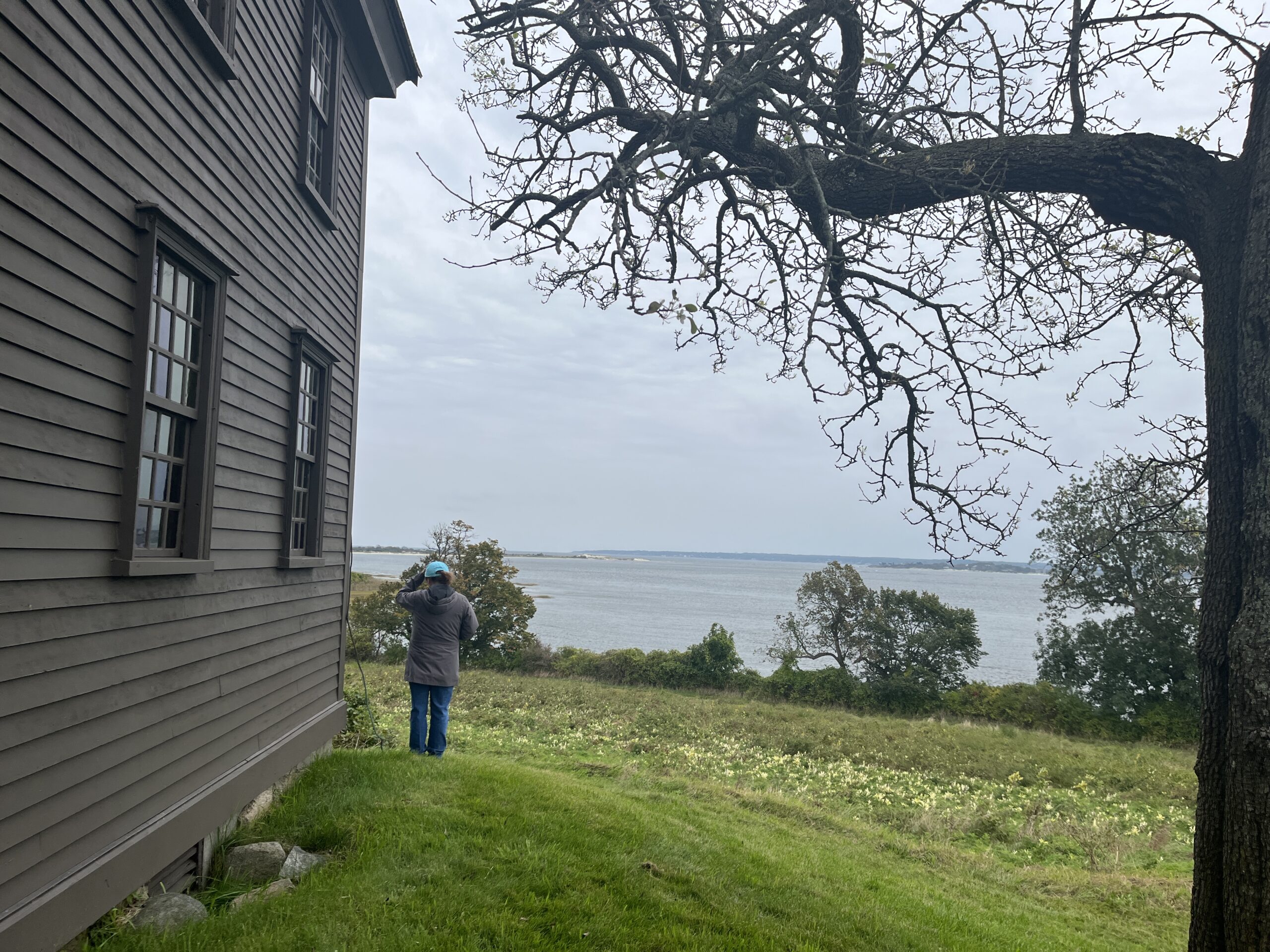
A king tide couldn’t stop hundreds of visitors from making a trip to Choate Island on Saturday, September 30. Cars filled the Crane Beach parking lot in numbers not seen since summer months, a bus bringing visitors down to a boat launch that carried them a short five minutes across the Essex River to the first of three drumlin islands that collectively make up what is referred to as Choate Island.
Once there, visitors trekked across the beautiful trails towards the Proctor Barn, located on Long Island, up toward the White Cottage on Hog Island and to the Choate House and gravesite. Along the way wildflowers, salt marsh, and ocean and river views captivated.
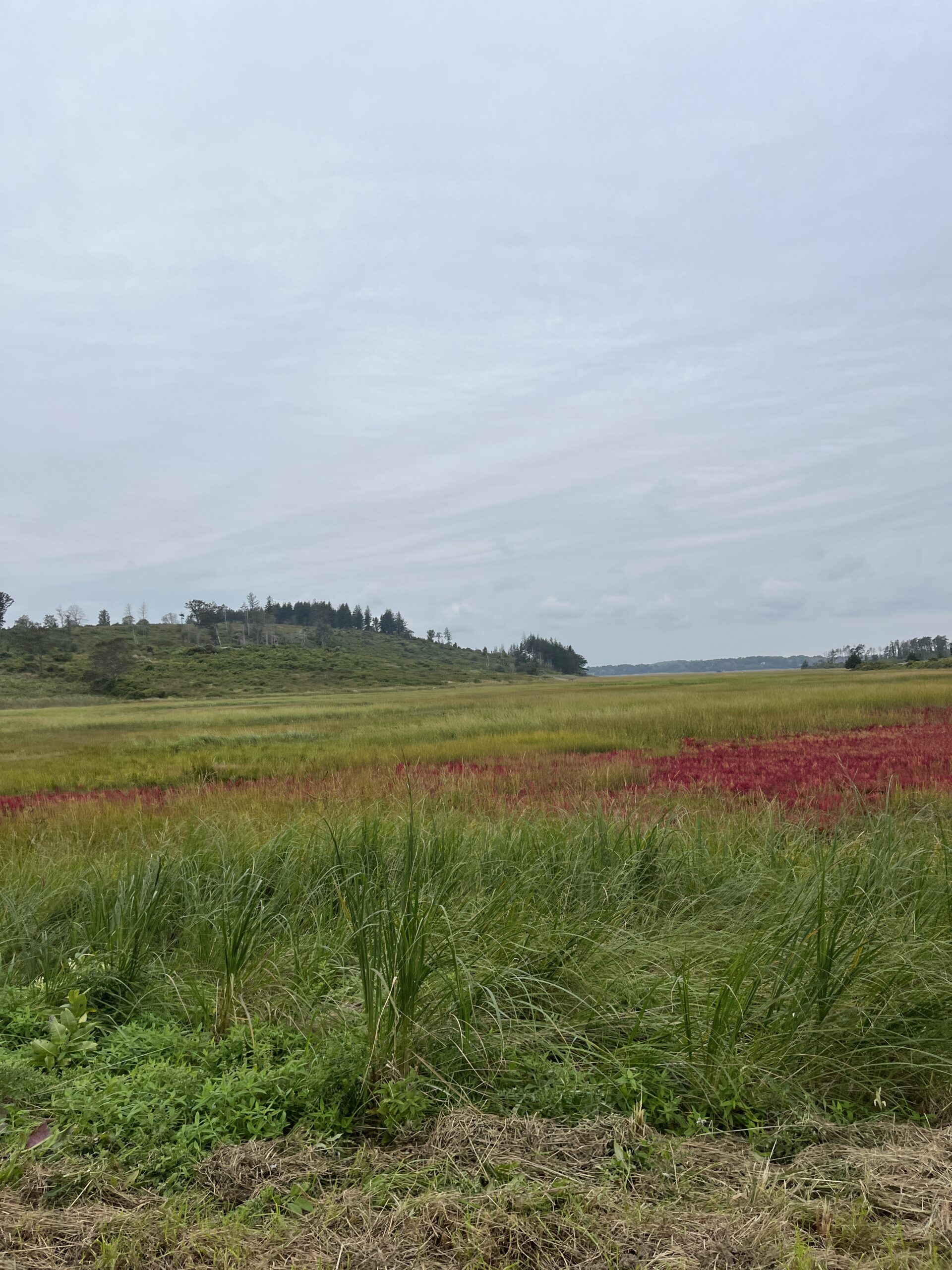
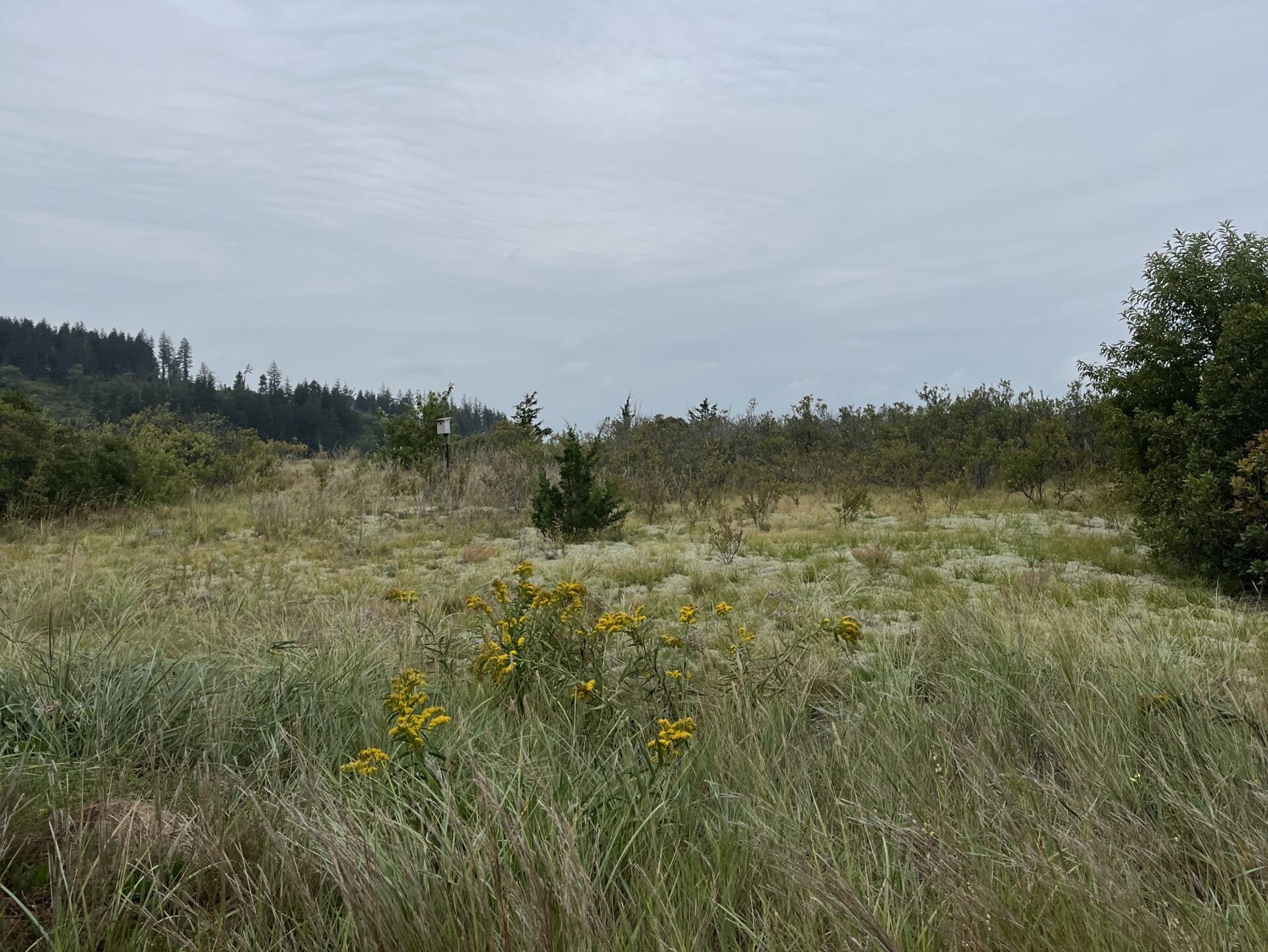
At the White Cottage, visitors enjoyed talks by coastal ecologist Russell Hopping, and historian Tom Beddall. A descendant of the Choate family, Martha Wonson Brandt, offered a reading of poetry from the memoir of Agnes Choate Wonson at the Choate House.
Many visitors driven by the unique opportunity to take in the Island journeyed through deep waters brought about by a King Tide. Shoes and socks came off and folks waded to see the many stunning vistas and experience the history of the island.
History of Choate Island
The first piece of Choate Island was bought by the Crane family in 1917 and is now a part of The Cornelius and Miné S. Crane Wildlife Refuge, owned and operated by the Trustees. The island has a deep history dating back to the indigenous Pawtucket people. There were decades of farmers who called the islands home in the late 1600s, followed by the Choate family through the early 1900s and eventually the purchase of the island by the Crane family in 1917 and 1927. In 1974, Miné Crane bequeathed the five islands to the Trustees as part of Crane Wildlife Refuge.
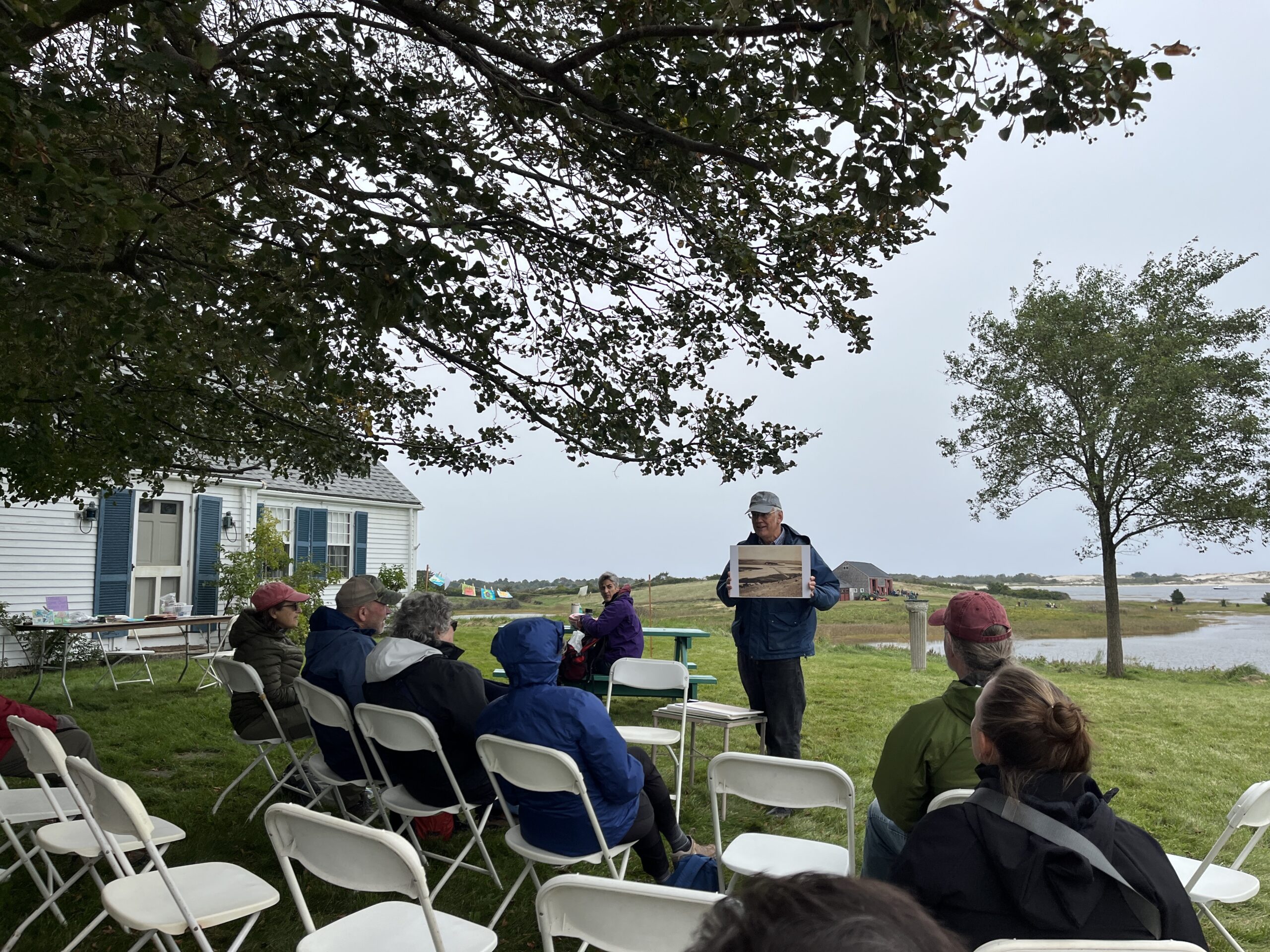
The island’s history has been studied in depth by historian Tom Beddall who spends his summers on the Island in the White Cottage. Tom spoke to visitors on Choate Island Day in front of his summer residence, sharing stories and photos depicting the island’s unique and rich history.
Speaking about the history of Hog, now Choate Island, Beddall shared, “In 1636 the general court ordered that all hogs kept within the Massachusetts Bay Colony had to be kept on islands or in fenced enclosures for the entire planting and growing season,” he explained. “So already by 1638, this is known as Hog Island, because every town that had a shoreline island put hogs there, which is why there are so many Hog Islands along the shore.”
He also spoke to the evolution of land use on the island, from small parcels of farmland to family farms, and the rekindling of appreciation for the shore in the summertime, leading to the creation of summer cottages on the land, before its purchase by the Crane family.
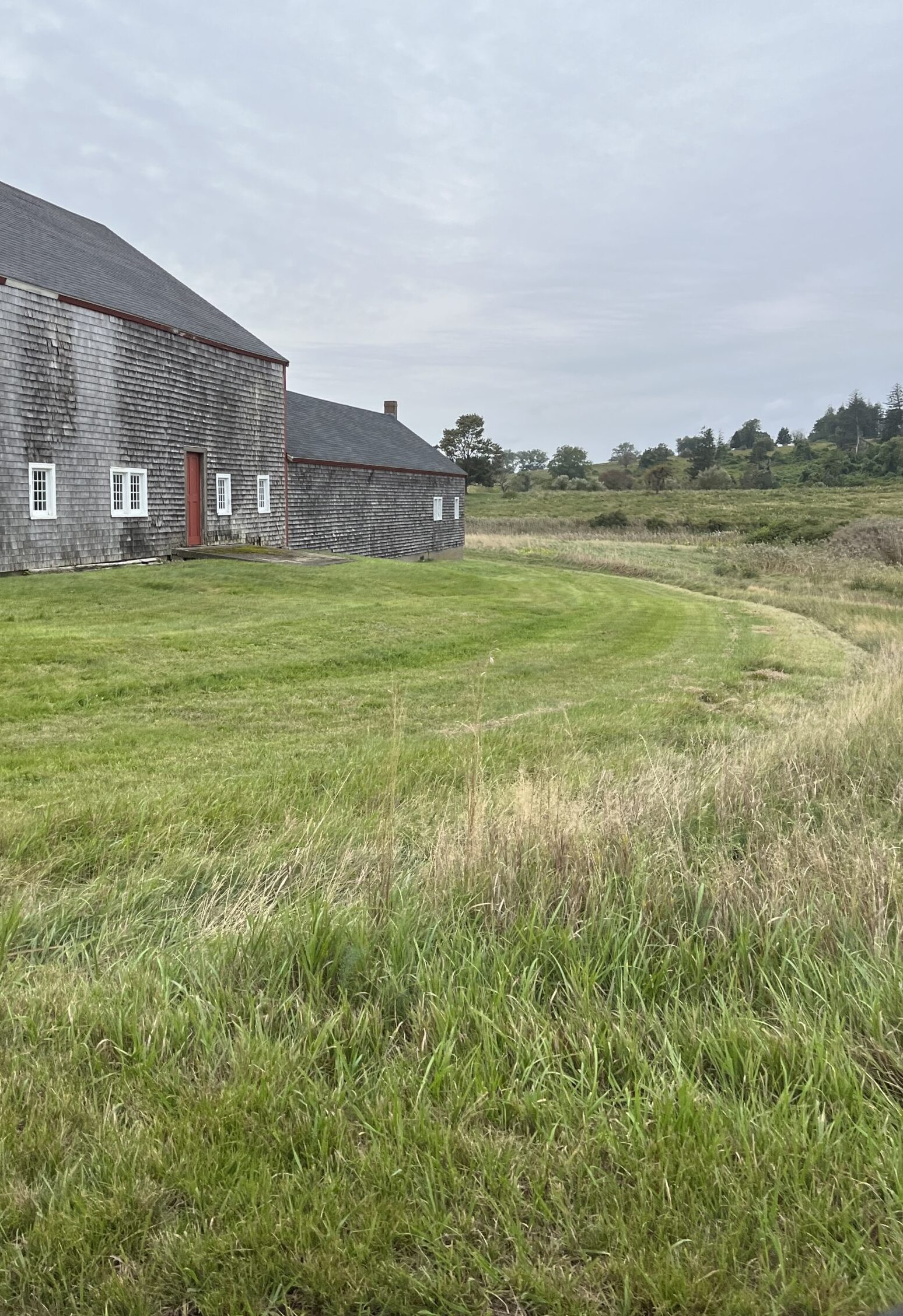
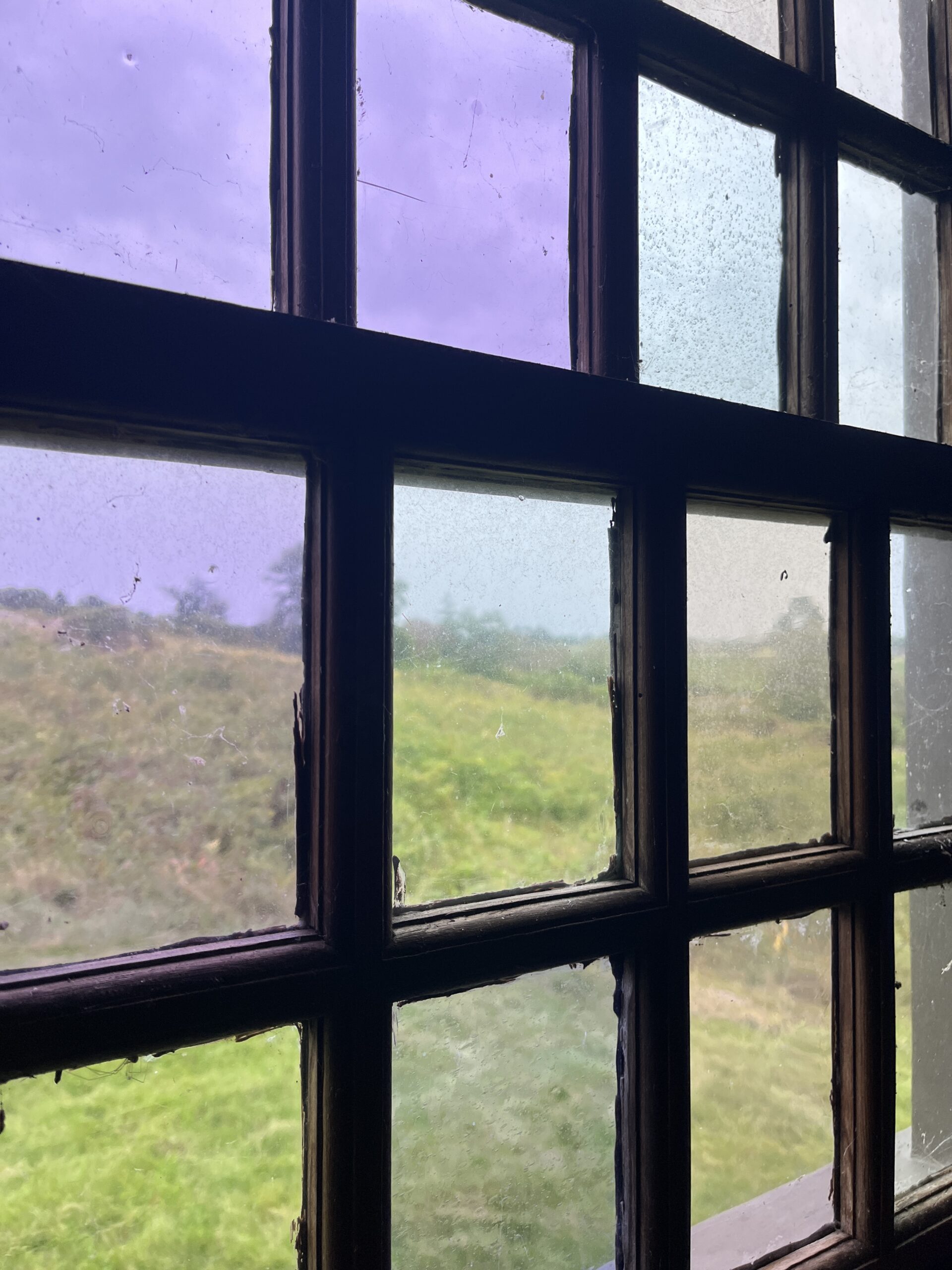
A King Tide Brings Coastal Resilience to the Forefront
A coastal ecology talk by ecologist Russ Hopping was underscored by the folks who braved flooded trails all around. Russ spoke to the work that The Trustees and partners are doing, attempting to fortify 1,274 acres of marsh in Newbury, Essex, and Ipswich using an innovative nature-based method of “ditch remediation.” The area of marsh being restored is called the Great Marsh, and a large swath is part of the Crane Wildlife Refuge. This work aims to increase resilience of the marshlands, which over time, have become prone to flooding due to the way they have been altered by humans.
The need for increased resiliency was on full display as the intertidal trails between the drumlin islands flooded with nearly a foot of water due to a king tide. Argilla road, a key point of access for thousands of visitors to the Crane Estate and Crane Beach as well as for residents and fishermen and clammers, also partially flooded during the king tide. The Argilla Road project is another that has been undertaken by the Trustees and the town of Ipswich.
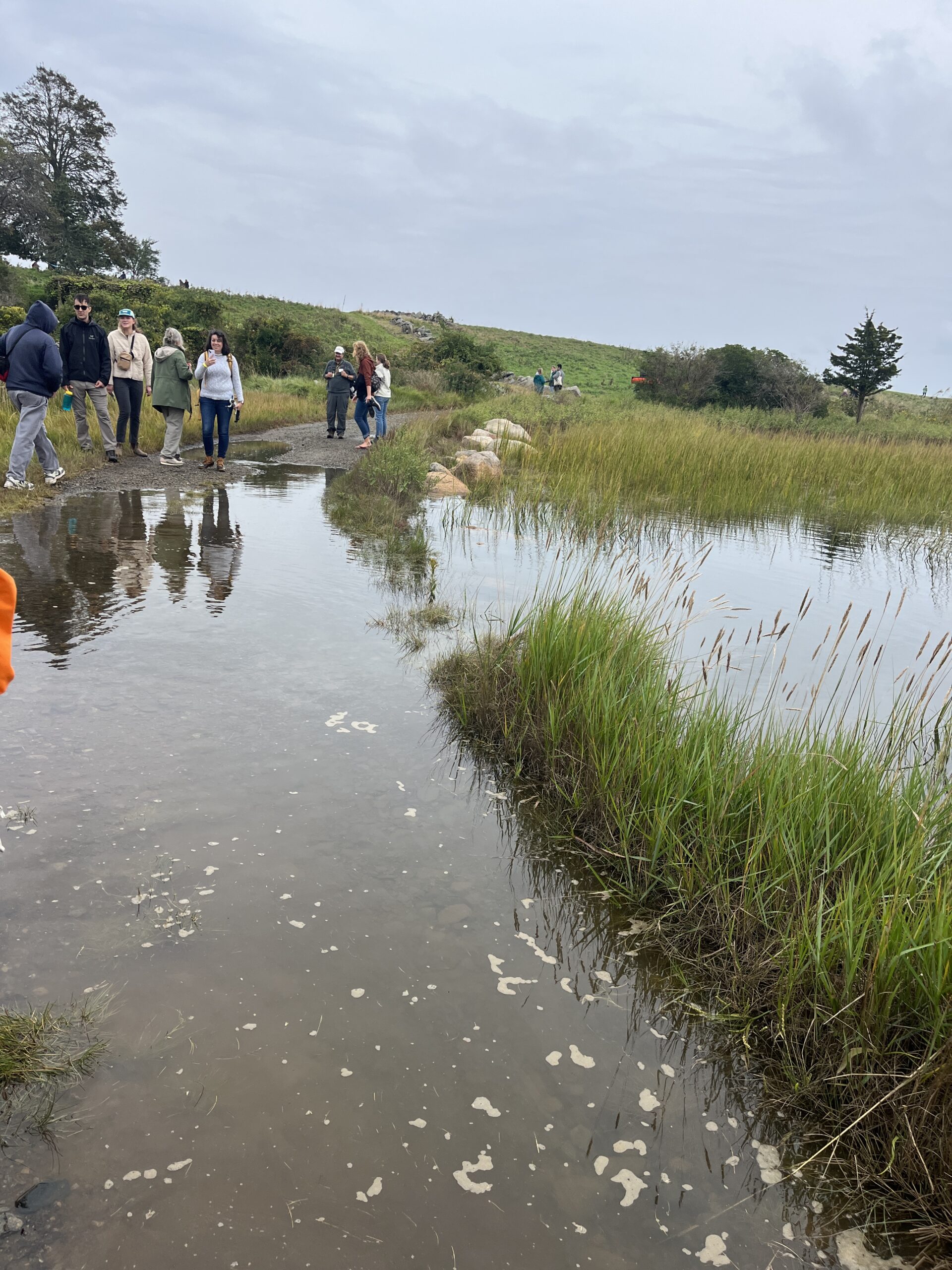
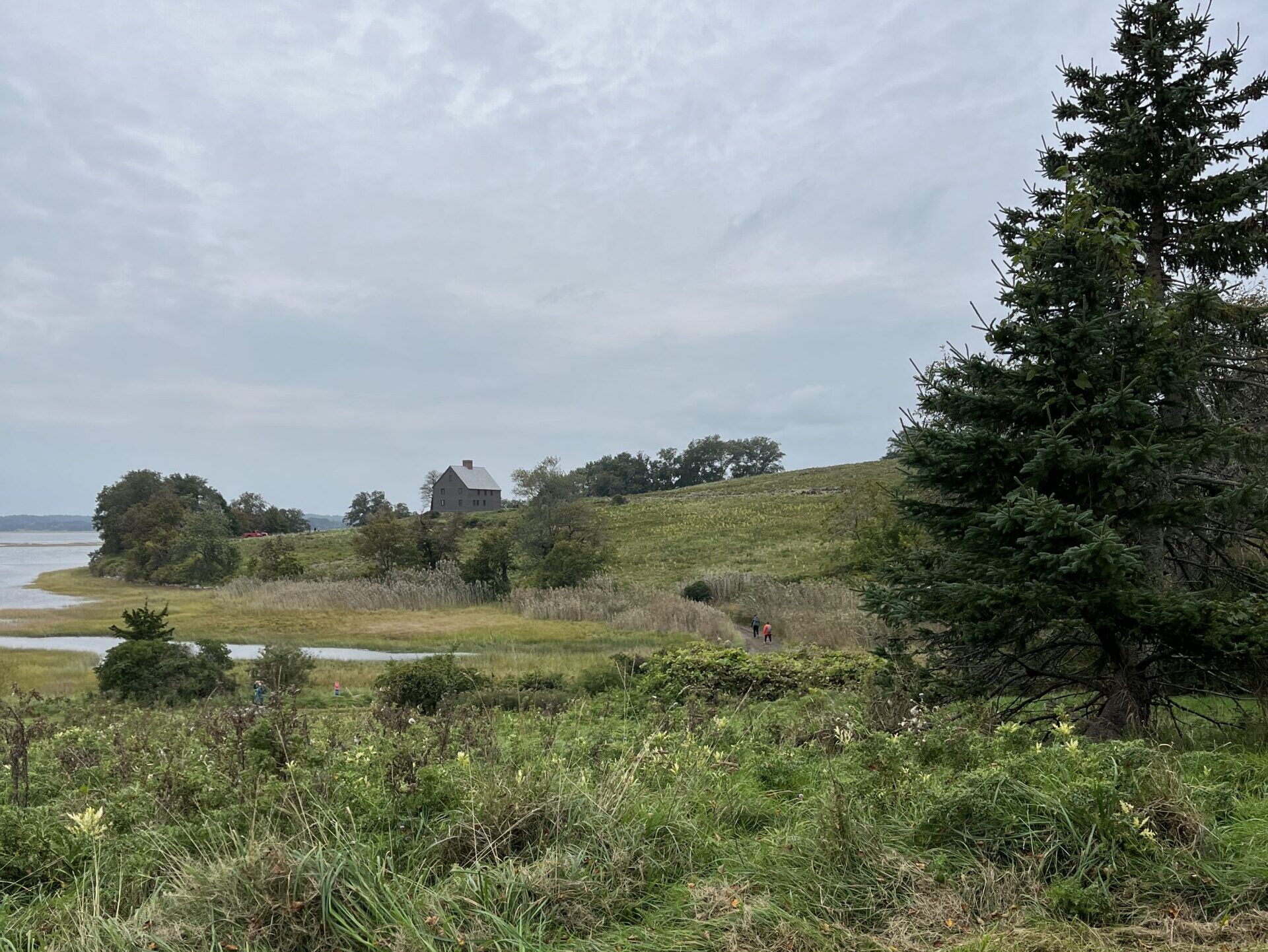
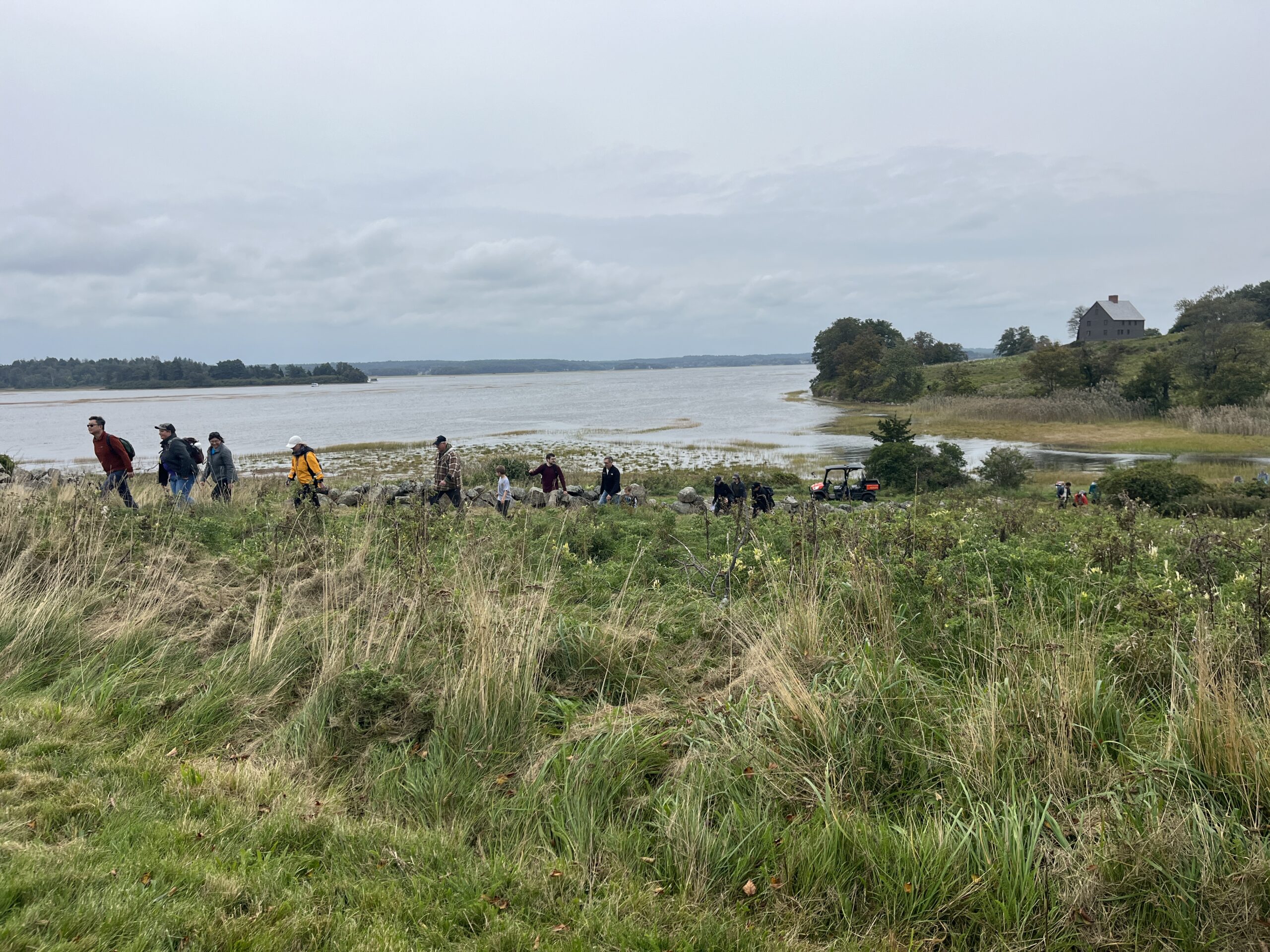
The King Tide presented no safety issue for those enjoying the day on Choate Island but did mean that if you wanted to get between the drumlins, you might have to take off your shoes and socks, roll up your pant legs and be prepared to get a little wet.
The Choate Island Day Experience
Trustees staff and volunteers manage the huge undertaking of welcoming so many visitors to the remote island on one day. While Choate Island is open to visitors daily from 8am – 4pm, there is no ferry transportation on any other day of the year.
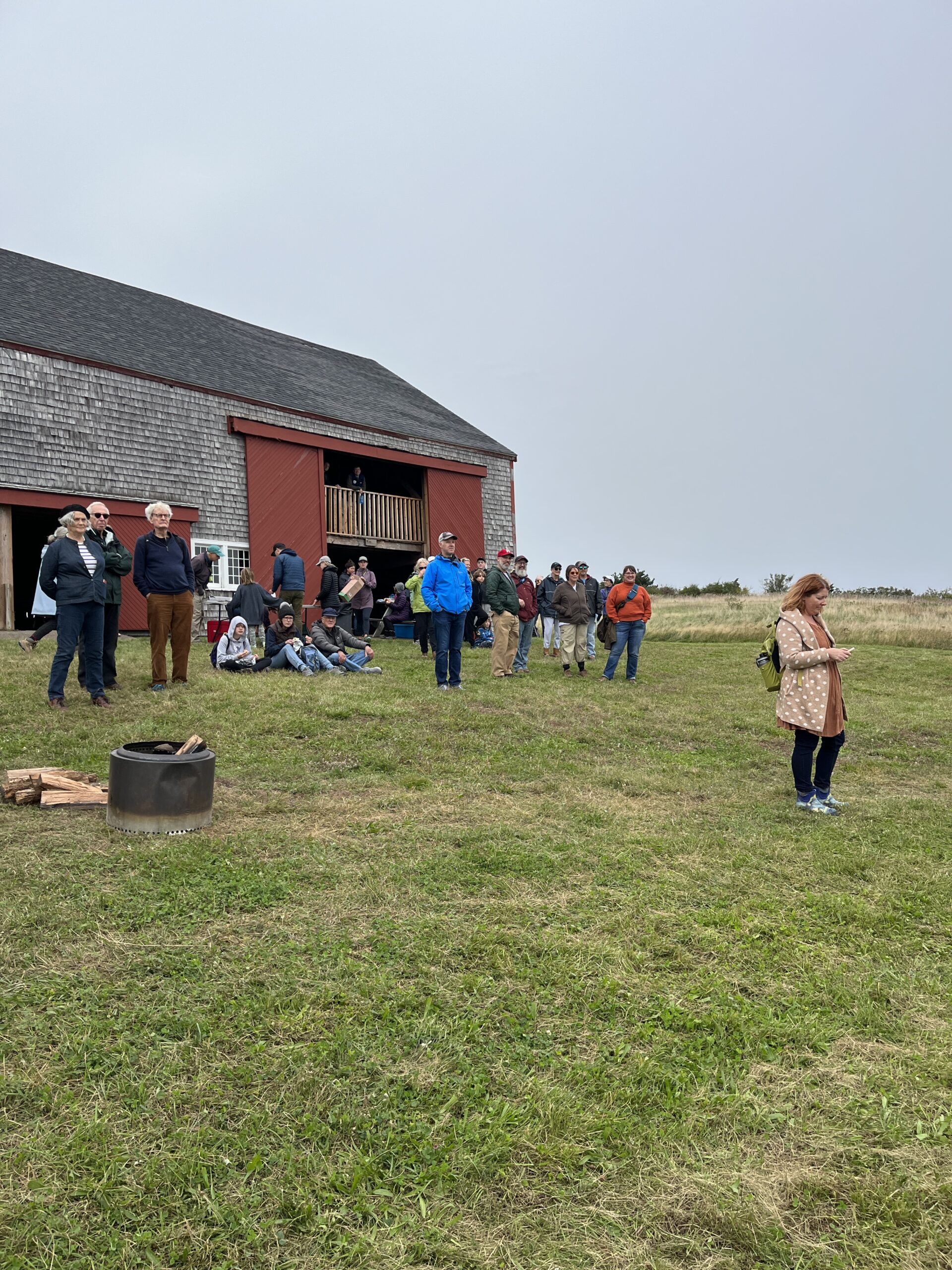
From welcoming visitors to offering guided tours and offering talks, volunteers and staff dedicate much of their time to ensuring the experience is an enjoyable one for all who venture out. And, when tides prevented some folks from journeying deeper into the island landscape, Crane Outdoors Manager Matt MacKenzie saved the day by delivering fresh cider donuts being served at the White Cottage to those who remained at the Proctor Barn.
Choate Island Day provides a unique opportunity for those who are local and visiting to dive into the history and ecology of such a unique place. To join Crane Outdoors for other activities throughout the season, click here, and we hope you will join us for Choate Island Day next fall.

